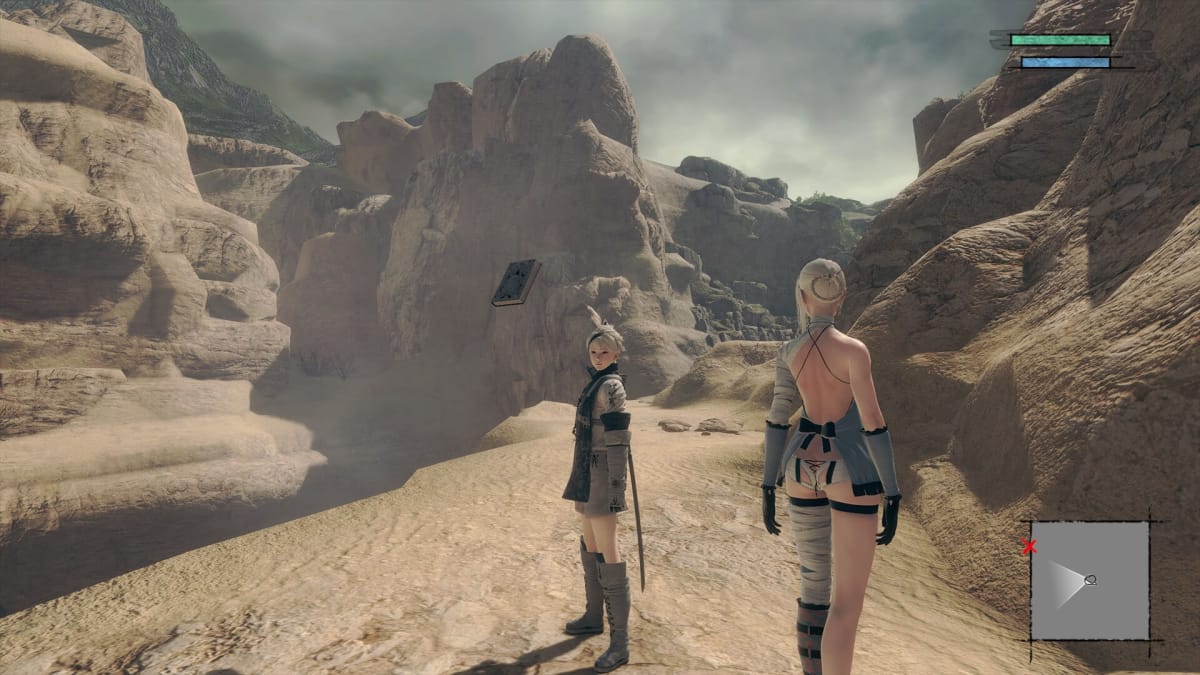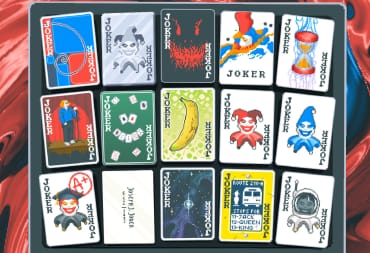Eleven years after its original stateside release, Nier Replicant sees a re-release falling somewhere between a remaster and a remake. It's a massive visual leap with almost every asset reworked, but Yoko Taro didn't want to label it as a remake for fear of being compared to the likes of Resident Evil 2 or Final Fantasy 7. Calling it a remaster also does the project a disservice as it's more substantial than a visual upgrade, improving combat and adding a new ending. These are valid concerns, but it's the final state of Nier Replicant Ver. 1.22's technical makeup that's most alarming.
From Automata to Replicant
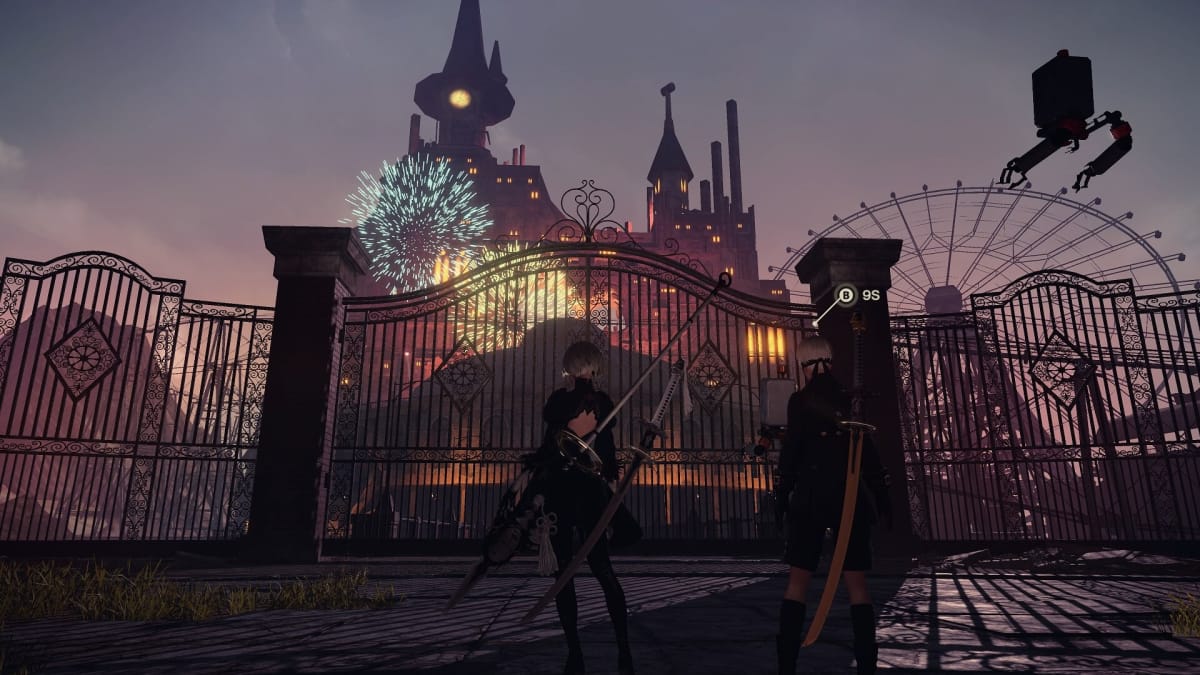
This new version of Replicant was made possible by Nier Automata. Were it not for its critical and commercial success, we wouldn't have Replicant Ver. 1.22. Automata is a modern classic with breathtaking music, satisfying combat, and a strong narrative that takes advantage of the medium. In telling its existentialist story through unconventional means, the modern climate praised it for its ambition. For all its successes, Nier Automata's technical underpinnings weren't among them.
It ran at 900p on PS4 with a bump to 1080p on PS4 Pro. The Pro version also had improved shadows, anti-aliasing, and added motion blur. These brought welcome refinements to a game lacking in polish, but it still led to a sense that these machines weren't handing in their best efforts. This situation became even more curious with the infamous PC port, which required the use of the FAR mod to fix it. Standing for Fix Automata Resolution, this mod allowed users to select resolutions past 1080p, unlocked the 900p cap on cinematics (which plagues all consoles including Xbox One X), and offered the option to reduce the precision of its global illumination.
Nier Automata targeted 60 frames per second on consoles and it was fine, but it could see dips into the 40s during boss battles and intense sequences. Sometimes, 40-ish fps dips occurred on the base consoles at random intervals as well. It was far from a 60 fps lock, but it was good enough that most people wouldn't notice. This performance profile isn't so bad when you consider a technically ambitious game like Battlefield 4 on the PlayStation 4 and Xbox One launch, which ran a similar 40-60 fps range.
Nier Automata isn't technically ambitious, though. Visually, character models and environments scream seventh generation with only a small number of assets appearing modern. Automata isn't a traditional open-world game, either, with small biomes broken up into chunks with obvious streaming "tunnels" connecting the various environments. Its visuals did not make sense for its performance output. It should have provided a much more stable lock, especially on PS4 Pro and Xbox One X and at higher resolutions.
The FAR mod clued us into the culprit: Nier Automata's global illumination implementation. By lowering the setting through this mod, PC users saw a massive uptick in performance for next to no visual loss. Why is this relevant? To my eyes and based on what I could gather, Replicant doesn't have the same crutch holding it back. Yes, it's visually upgraded in most respects over the original, but it still looks like an average seventh-generation game without some underlying technique that's strangely demanding. It looks worse than Automata with more confined environments broken up by loading screens, making the rendering setup and poor PC port all the more shocking.
The Nier Replicant Resolution Sacrifice
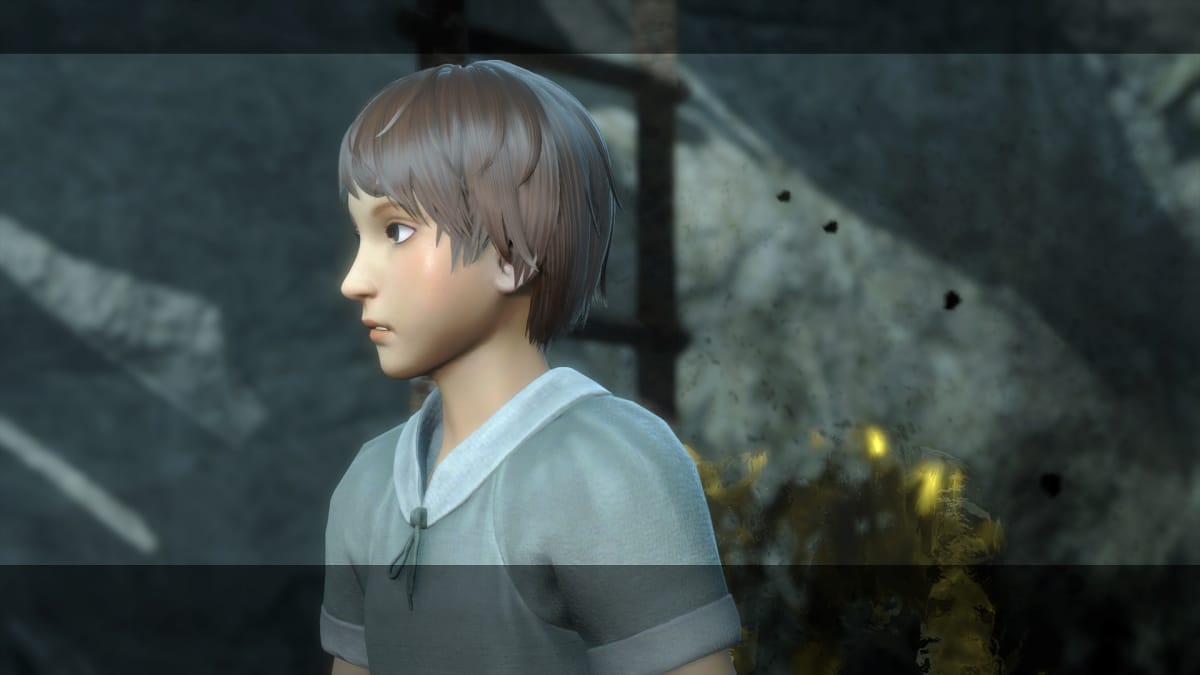
Nier Replicant Ver. 1.22's resolution setup on consoles is among the most surprising we've seen out of the generation. These are the raw statistics as per VG Tech's analysis:
- Xbox One - Dynamic resolution ranging from 1152x648 to 1440x810
- PS4 - Dynamic resolution from 1440x810 to 1920x1080
- PS4 Pro - Dynamic resolution from 1536x864 to 1920x1080
- Xbox One X - Dynamic resolution from 1920x1080 to 2560x1440
- PS4 Pro and Xbox One X feature enhanced shadows over base consoles
- Xbox One consoles have improved texture filtering over PS4 consoles
VG Tech also makes note of improved texture quality on Xbox One X compared to Pro, though the provided shots don't make that clear. The difference in quality appears to come more from the higher resolution combined with improved texture filtering rather than a higher quality asset in use.
Nier Replicant runs at significantly lower resolutions than its more visually and technically impressive sequel across every target platform. It's a treatment that doesn't do this franchise or the hardware, aging as it is, justice. The Xbox One dropping to sub-HD resolutions is shocking. Even more so than that, the PS4 Pro dipping below 1080p for a remastered PS3 game that isn't pushing any boundaries doesn't make sense. Even with these mobile-grade CPUs and old GPUs on the base consoles, resolutions should not be dropping this low.
This startlingly poor overhead translates to the PC space with overly high system requirements for the technology on display along with fluctuating performance, issues with frame rates past 60 fps, and graphics options that do little to offer significant performance advantages or visual changes.
The Toylogic Dilemma
Toylogic handled Nier Automata Ver. 1.22. Their portfolio of original works includes Happy Dungeons and Happy Wars. Beyond this, they've assisted in development of The Evil Within, Kid Icarus: Uprising, Teenage Mutant Ninja Turtles: Smash-Up, and Super Smash Bros. Brawl. Even with Nier Automata's success, it's understandable why Square Enix would still be reserved with the amount of money poured into a Replicant rerelease. They wanted to make sure Automata's sales weren't some fluke.
Even with the logistics, Toylogic was a few rungs below the amount of investment a cult favorite like Nier Replicant deserved. It was never going to get a Shadow of The Colossus style remake, but it could have been so much more than the current product. Game visuals come down to several factors beyond talent and hardware. Budgets and deadlines are also major factors. While I don't doubt the funding and release schedule played a role, Toylogic's original releases don't paint a positive picture regarding their technical proficiency.
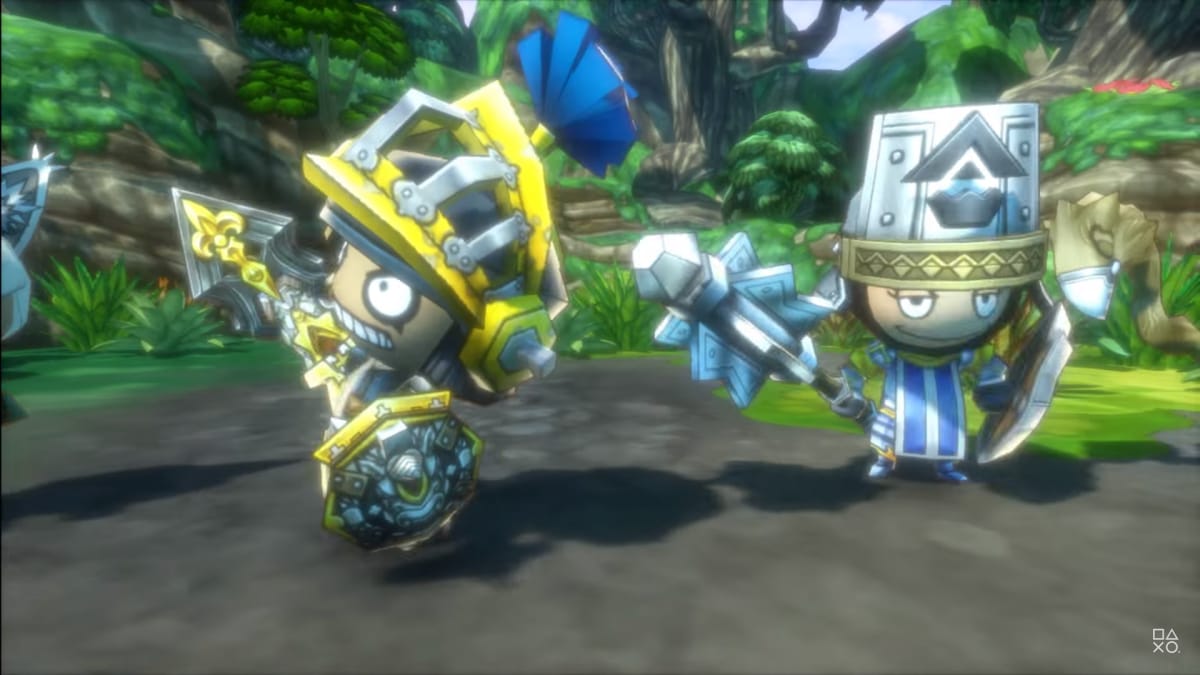
I need a word with whoever decided THIS team should tackle Nier Replicant.
Nier Replicant Compared to Automata
Comparing Nier Replicant's remaster to Automata puts its startlingly poor rendering setup into perspective. Almost any modern game uses LoD (level of detail) transitions as a replacement for the older, more egregious pop in. Rather than making entire assets appear within the player's view, lower detailed models are swapped for more complex models as players approach the asset. You'd be hard-pressed to find a game that doesn't use this. Both Nier games use LoDs.
Despite the unremarkable visuals, Automata's LoDs make sense. Its world lacks traditional loading screens, meaning any assets must be streamed in real time as players traverse the environment. Combined with the GPU-intensive global illumination and the weak CPUs on the consoles, LoDs were unavoidable. This solution doesn't make as much sense in Replicant. Its environments feature less complex geometry, and they're much smaller in scope. Every area is broken up into chunks, separated by loading screens. The protagonist's village is a tiny space that can be traversed in 15-20 seconds. Despite this, the two-floor library within that village needs a loading screen. With the extra headroom that should exist on the PS4 and Xbox One, we shouldn't be seeing LoDs in this village, yet the rock formations within this village feature several obvious LoD states.
Shadows are another weak point. While some objects do cast dynamic shadows, most of the environment is filled in by baked shadows. Trees are a curious sticking point as the team has adopted a "trick" to give the impression of a more dynamic scene. Trees cast completely static shadow maps. Begin to rotate the camera, however, and the game alters the shadow map between different states to give the impression of movement. Unfortunately, it creates a distracting flickering that fails to hide the imperfections to this approach. Automata's trees cast dynamic shadows that update in sync with the tree.
Nier Automata makes heavy use of volumetrics, with light shafts in specific areas to punctuate a given scene's mood. Replicant uses what appears to be fake light shafts in some scenes and normal light shafts in others. While standing within the vicinity of one of the light shafts within the lost shrine, character models exhibit what appears to be some approximation of subsurface scattering. It's either a baked effect or just a poor implementation of the actual technique as the orange glow on Kaine and the protagonist in this scene in the lost shrine looks unnatural. When facing the camera, light leaks through the protagonist's hair, imprinting a deep orange glow beneath the hairline. Automata, by comparison, handles subsurface scattering more naturally.
Nier Automata's texture quality is inconsistent with some being lower resolution than Replicant, but the average texture is higher resolution than its enhanced predecessor. This applies to environments and character models. While neither game has especially remarkable NPCs, Replicant's denizens are much less impressive. They feature lower-resolution textures across their clothing along with much lower polygon counts. Replicant's NPCs also reflect light less naturally than its sequel.
Lighting plays a major role in a game's look. Low-quality assets can appear decent with realistic lighting. This is one of Automata's major advantages. Not many people talk about how bad Automata looks because of its lighting masking much of its deficiencies. The convincing light bounce coupled with the art direction combine to create striking scenes. Without an equivalent lighting model, Replicant's already low-poly and low-resolution assets appear flat. While ambient occlusion is in play, it's less refined than Automata. Fields of grass employ the expected ambient shading, but not to the same degree. Replicant also has issues with handling lighting within shadowed regions as evidenced by brightly lit foliage sitting within a huge shadow cast by a massive rock formation.
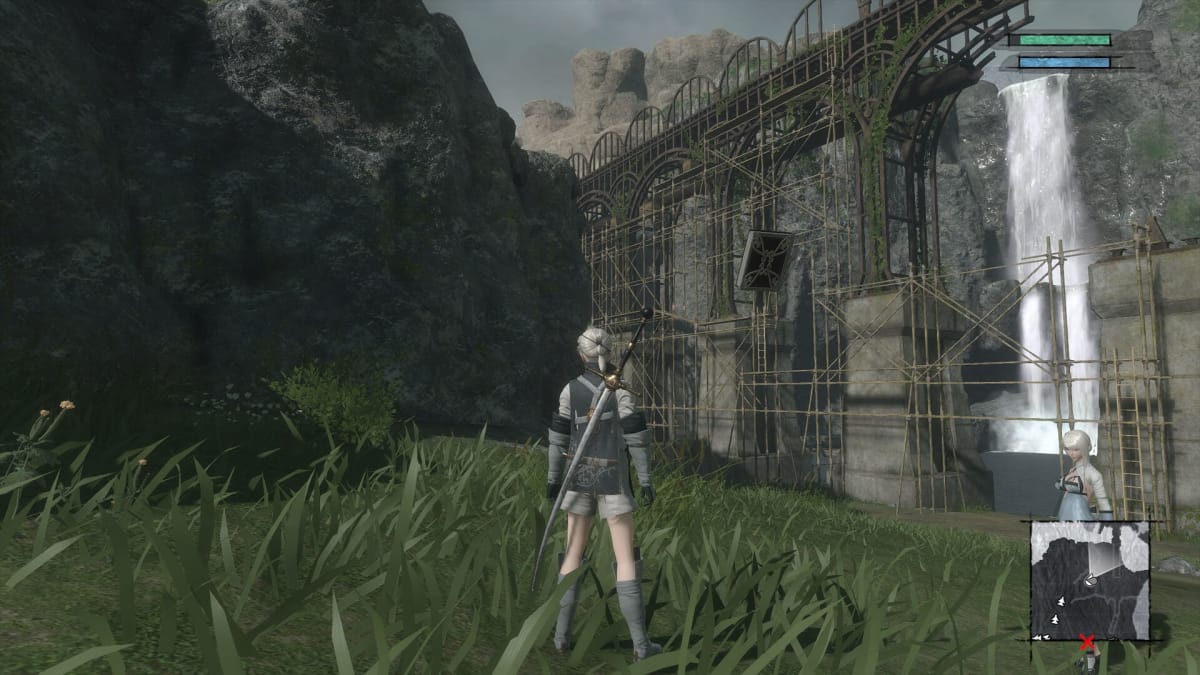
It appears to use screen-space ambient occlusion for its AO pass. Beyond the lack of proper ambient shade, its screen-space elements are extremely distracting. As the name suggests, SSAO uses information in screen space, as in the player's view, to generate ambient shade. While not as common, games today still use SSAO 14 years after its introduction. However, Nier Replicant is the first time I can remember ambient shading obviously appearing and disappearing around geometry with a light touch of the right analog stick. It's as distracting as games that use screen-space reflections without some sort of fallback layer.
Replicant Needs a Patch
One may wonder what the sense in all this nitpicking is. Most remasters of games from this era suffer from any combination of these issues. The difference lies within the performance and rendering setup. Most games from this era run at or near native 4K on Xbox One X, anywhere from 1440p to 1620p on PS4 Pro, and native 1080p on both base consoles. In one positive stroke, Nier Replicant holds a locked 60 frames per second. It may just be the most stable 60 fps you'll see on the base consoles especially, but that shouldn't have had to come at the expense of such a resolution deficit. Nier Automata's unremarkable assets were a matter of logistics, but its performance was a result of its expensive global illumination. In Nier Replicant's case, every facet of its visual and performance makeup seems to stem from a combination of resources and developer talent. Given the studio's portfolio, though, it's safe to say it leans more in the latter camp.
Have a tip, or want to point out something we missed? Leave a Comment or e-mail us at tips@techraptor.net
